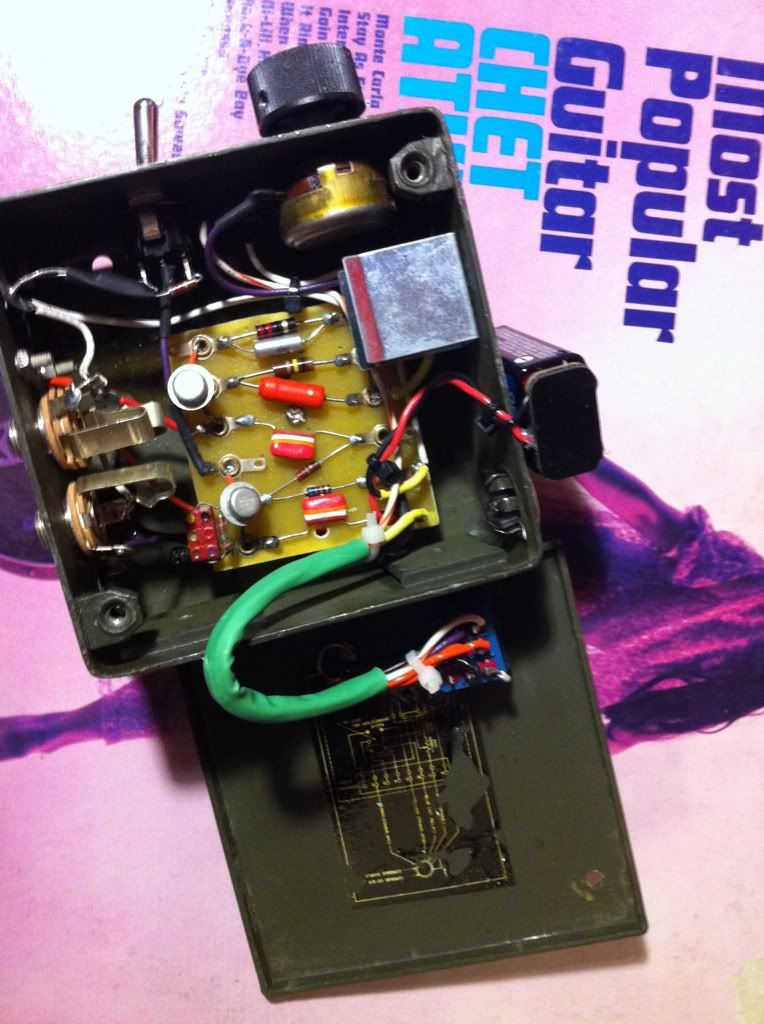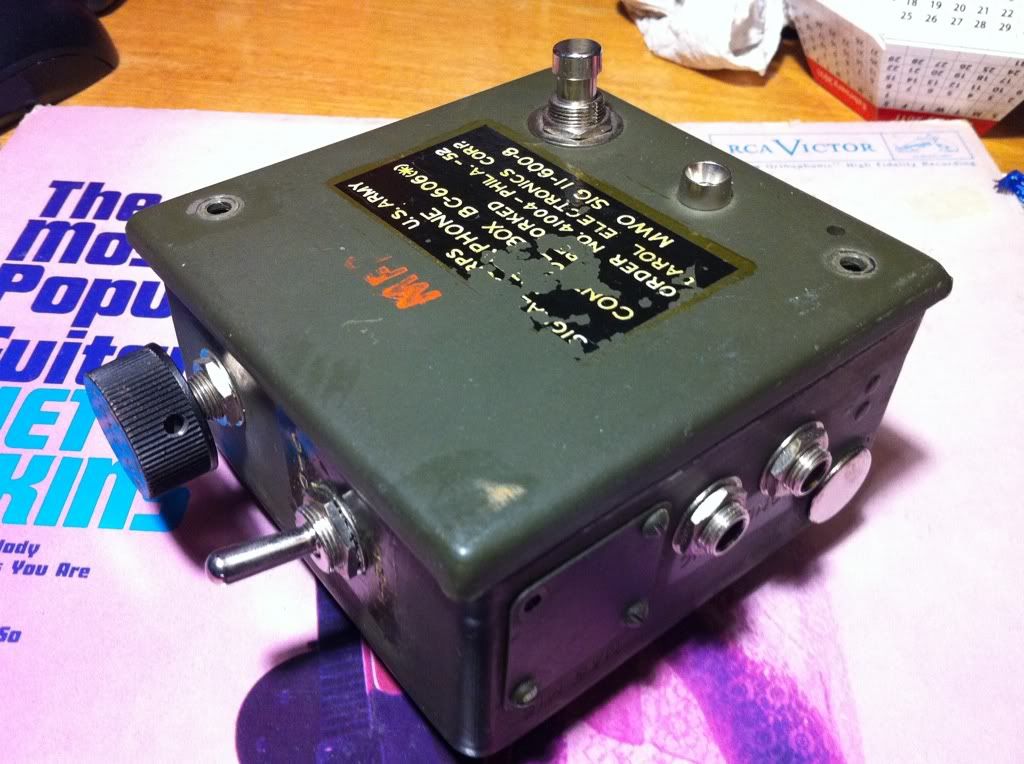ok, here it is, as promised, AA's Circuit Splinter No.2! but first, a little warning- i am not an electrical engineer, nor do i claim to resemble anything close to one, here or on television. please take everything i post as just what it is- the off kilter ramblings of a misinformed diy enthusiast- nothing more, nothing less. i'm trying to learn just like you.
now-
we are continuing our limited look into DC coupled buffers and amplifiers. in this case, a JFET/BJT Feedback Amplifier. this amplifier configuration is known as what is called a Sziklai Pair, otherwise known as a compound transistor, which is similar to a darlington pair, and sometimes called a compound darlington. this wikipedia article goes into the sziklai pair a bit more, such as how they are often used in discrete solid state output stages.
here is a great article as well from answers.com-
in this article is a description of the feedback involved-
and finally, a jensen transformers app-note for a piezo buffer amp-
basically, what we have done that is different here from the last edition of Circuit Splinters(in my limited understanding), is to reduce the amount of feedback from one stage to the next. previously we had an infinite amount of feedback, which gave us a voltage gain of 0. by inserting R5 into the picture, we raise the resistance, and therefore lower the amount of feedback. in doing this, the gain of the stage rises. as you can see below, the gain of this stage is equal to the ratio of R3 to R5. so, lower R3, or raise R5, and the gain goes up. the circuit below has R3-470, R5-4700, so 4700/470 = a gain of 10. the great thing about this kind of stage is that you have a high input impedance from the FET, a buffered output, and you get voltage gain instead of just current gain as in a classic buffer. remember that R2 may have to be adjusted to 1/2 your supply voltage on the drain of Q1 for the proper amount of headroom.

i think that this circuit tends to sound best when used in a "clean" gain type of stage, with just a slight amount of breakup. never the less, many different adjustments can be made. instead of R3, put a large bypass cap, and move R3 to the emitter of Q2 for more gain. try different bypass caps for different frequency responses. bypass Q2's emitter. if you adjust your bias circuit, you can use a bjt for Q1. try a Ge pnp for Q2. see what happens when you put a small cap from the source of Q1 to the collector of Q2.
here is an example of an RIAA circuit that uses this configuration. you can see what has been done to tailor the frequency response of the stage for the RIAA curve using RC filters in the feedback section.
(click to enlarge)

here's a version from John Linsley Hood that uses a bootstrapped input-
(click to enlarge)

here's another one that uses a bjt for Q1, and has an interesting baxandall-style tone control based on feedback as well. note the bias configuration for the BJT input transistor.
(click to enlarge)

as always, if anyone out there has any real knowledge they can share, feel free! the sky's the limit. go nuts. have fun. take it easy!










